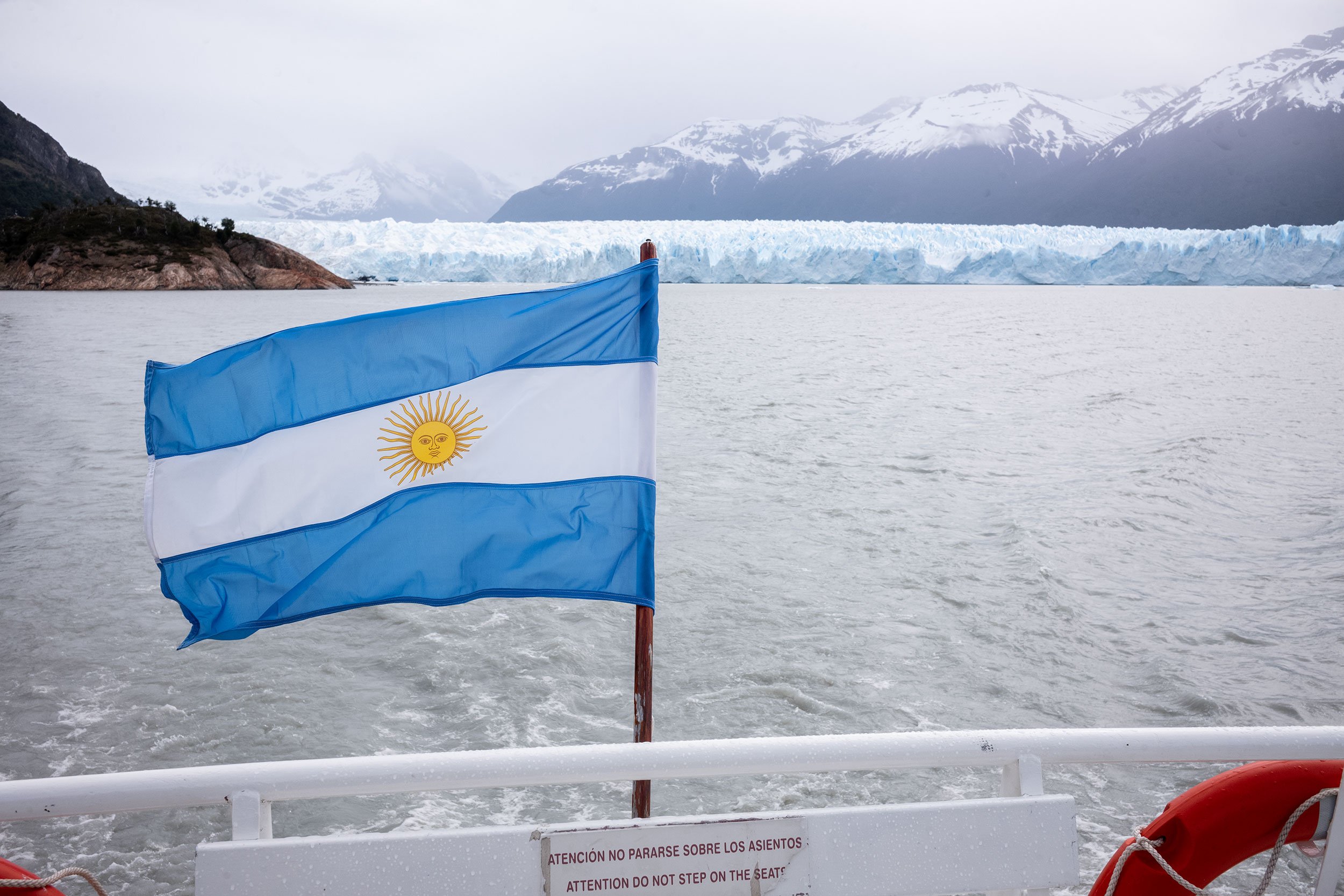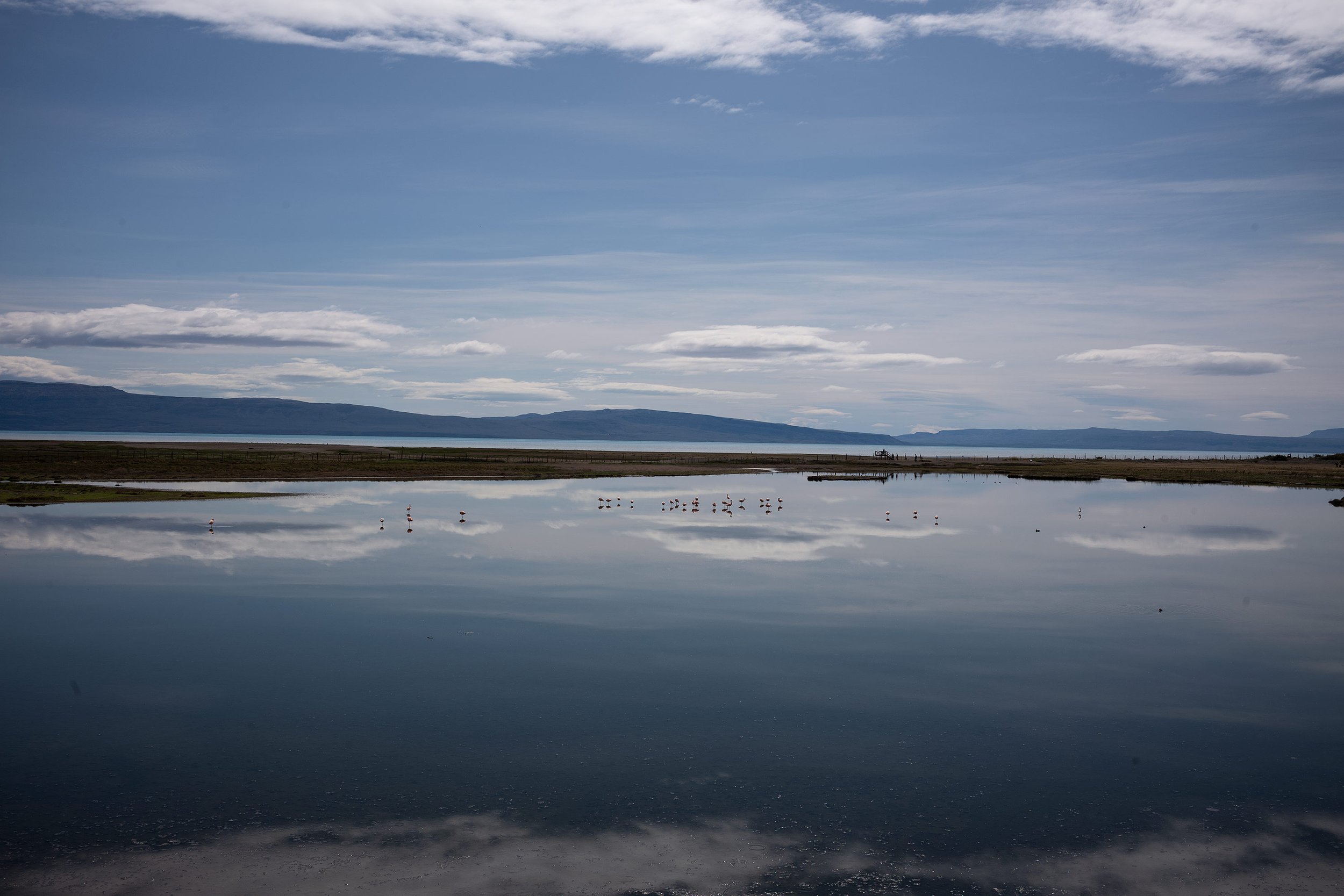
Patagonia: Chapter four
Exploring the Perito Moreno glacier.
The van picks me up at 07:45 and drives east, towards the glacier. On board are a French couple, a Spanish couple, and a group of three from the UK along with their travel buddy. On the way, Lucila tells us the story about the Calafate berries.
From a plaque at my hotel:
The legend is about a beautiful young woman named Calafate with golden eyes. One day a young man from another tribe met her and they both fell in love at first sight. Unfortunately, being from opposing tribes, her father was opposed to this love and asked the shaman for help. The shaman said he could not end their love; he could only separate them. The father accepted this and so the shaman transformed Calafate into a bush of golden flowers, leaving her lover to search for her throughout the steppe. This is why each spring the area is filled with yellow Calafate flowers.
The legend of El Calafate says that whoever dates to eat the fruit of the bush will fall under its spell and fall madly in love with Patagonia, for which they will forever be forced to return.

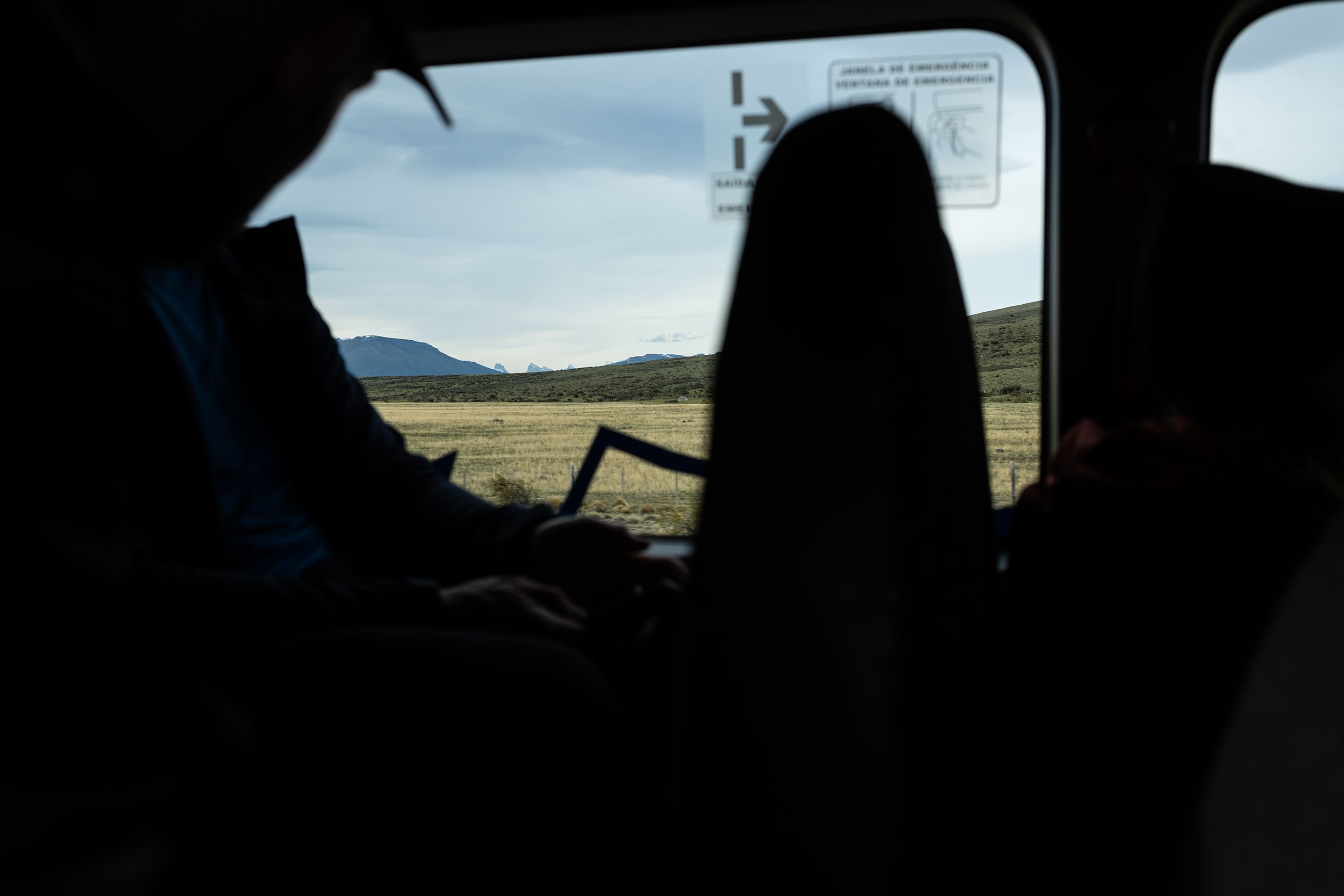
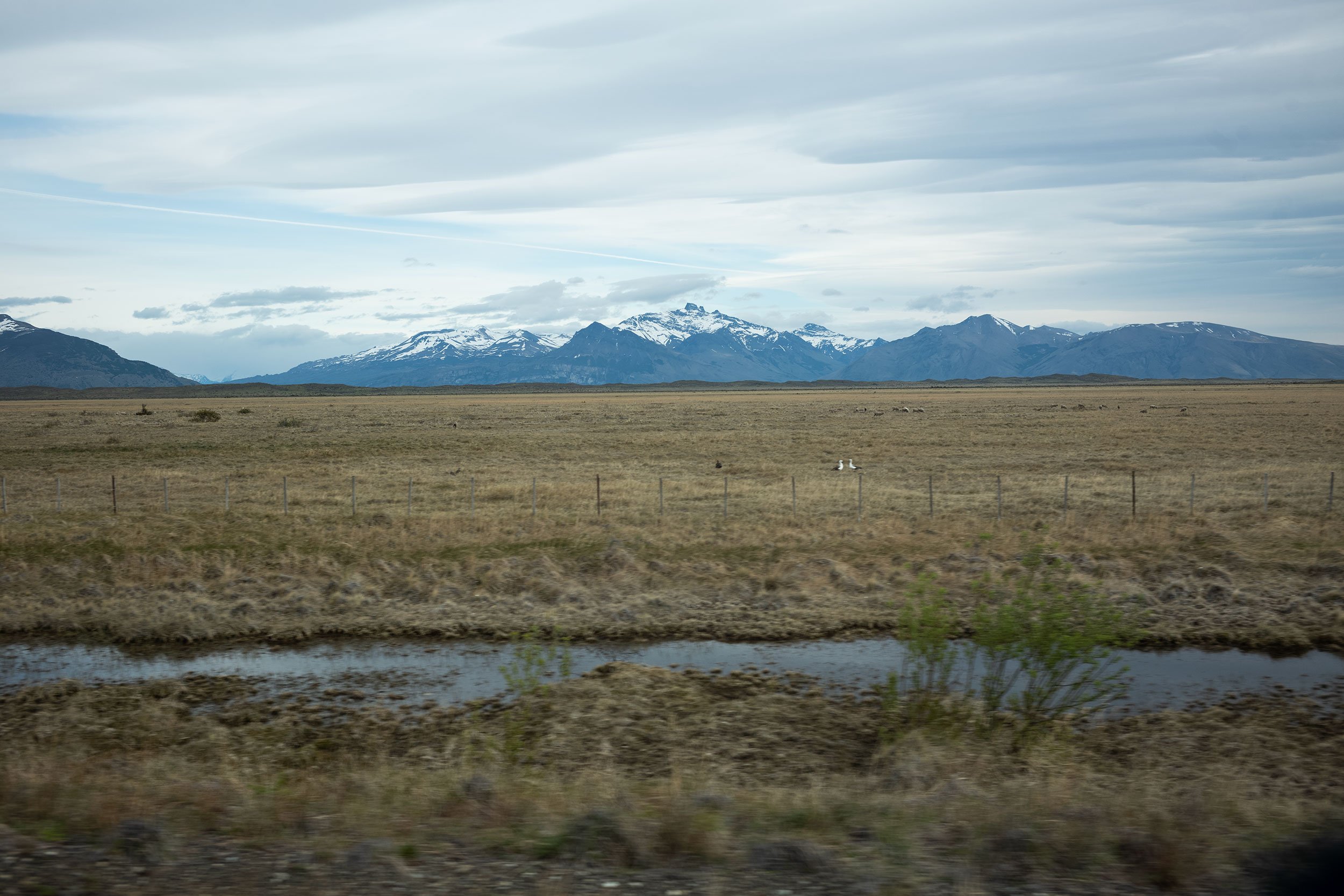
She asks us if we know why Perito Moreno is famous. I say it is because of the easy access. She nods and adds two more: the glacier is in equilibrium, which means that its size is generally constant, and for the arch that forms when the glacier touches the peninsula and water forces itself under it.
At the next intersection we take a left and wind our way up the mountains. We’re soon given our first glance at the glacier. Lucilia tells us this is the first ‘wow’ moment, but there would be more and better to come. That said, the bus won’t stop unless we say a collective “Woooooow.” We happily oblige.
The sight is stunning and one I for which I am unprepared. I had seen a photos in the brochures I was sent, but they didn’t even come close to suggesting the enormity of the glacier and the sheer awe I would feel before it.
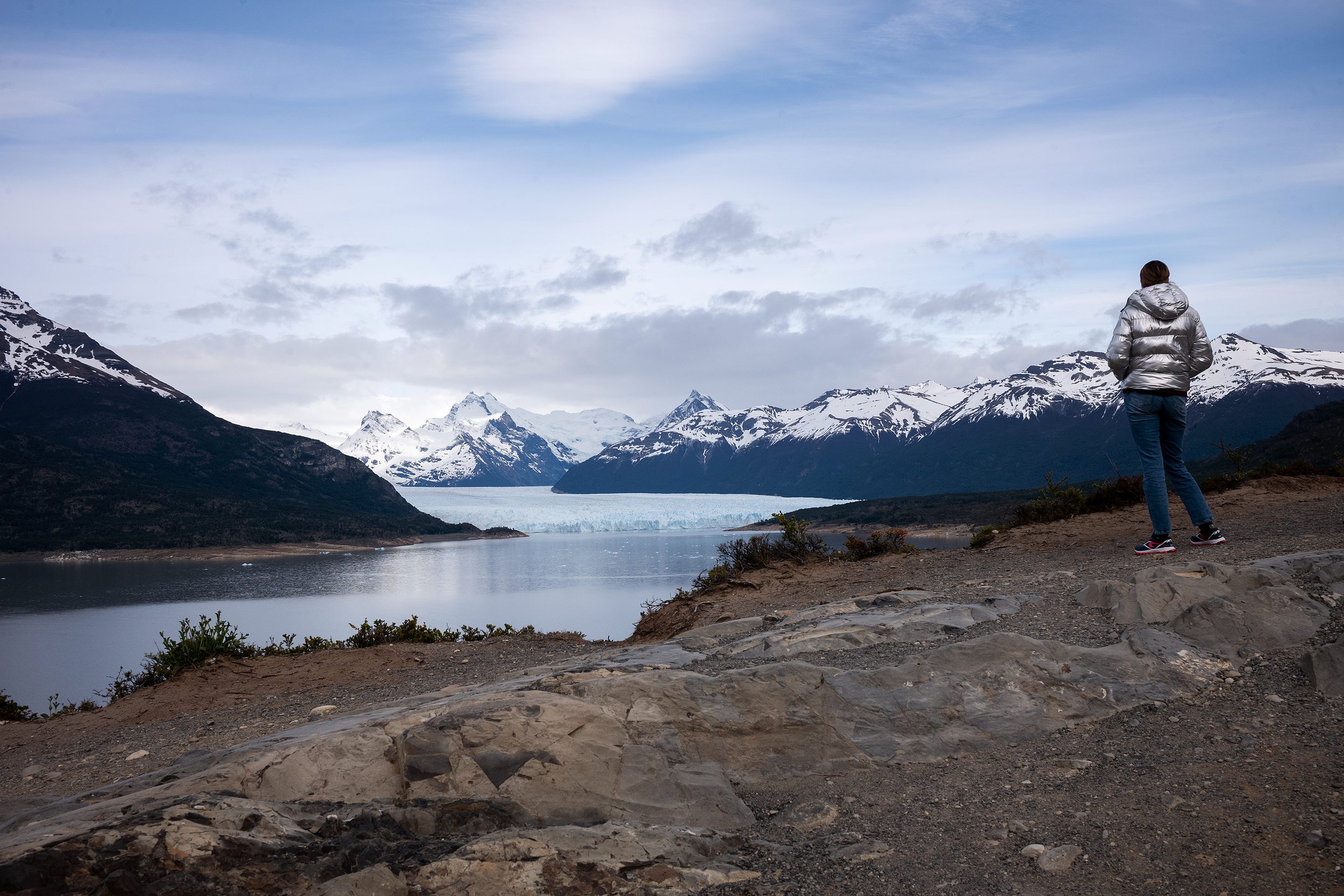
After pausing for a few moment for photos, we re-board the bus for the short drive to the main entrance and the viewing balconies that had been built across from the glacier. Lucilia recommends we take the blue path as it would show us the north face of the glacier. We would see the southern face from the boat.
She also advises us to keep close watch on the glacier. If we see a small piece fall we should wait as it could signal a calving event. By the time you’ve heard it it’s already too late.

As we walk to the viewing platforms we can hear the glacier cracking, but we can’t see the chunks of ice fall into the lake. I take Lucila’s advice and walk to the irght, following the path until it comes to the edge of the lake. I can’t stop taking photos of the glacier and of the landscape beyond. Every time the light shifts, the glacier looks different as the whites and blues of the ice brighten or deepen.
At one viewpoint I stand for a while to admire the glacier and see a boulder-sized piece of ice break away and fall. Checking the time I decided to walk back to the main viewing platforms so I can spend some time watching the glacier before returning to the van. A small bit falls off of a leaning peak and I decide to watch the spot. I am soon rewarded as a large piece breaks off and crashes into the water sending up a huge splash of water. The French couple stood nearby and Marine exclaims. Did you catch that?! I did. It was spectacular.
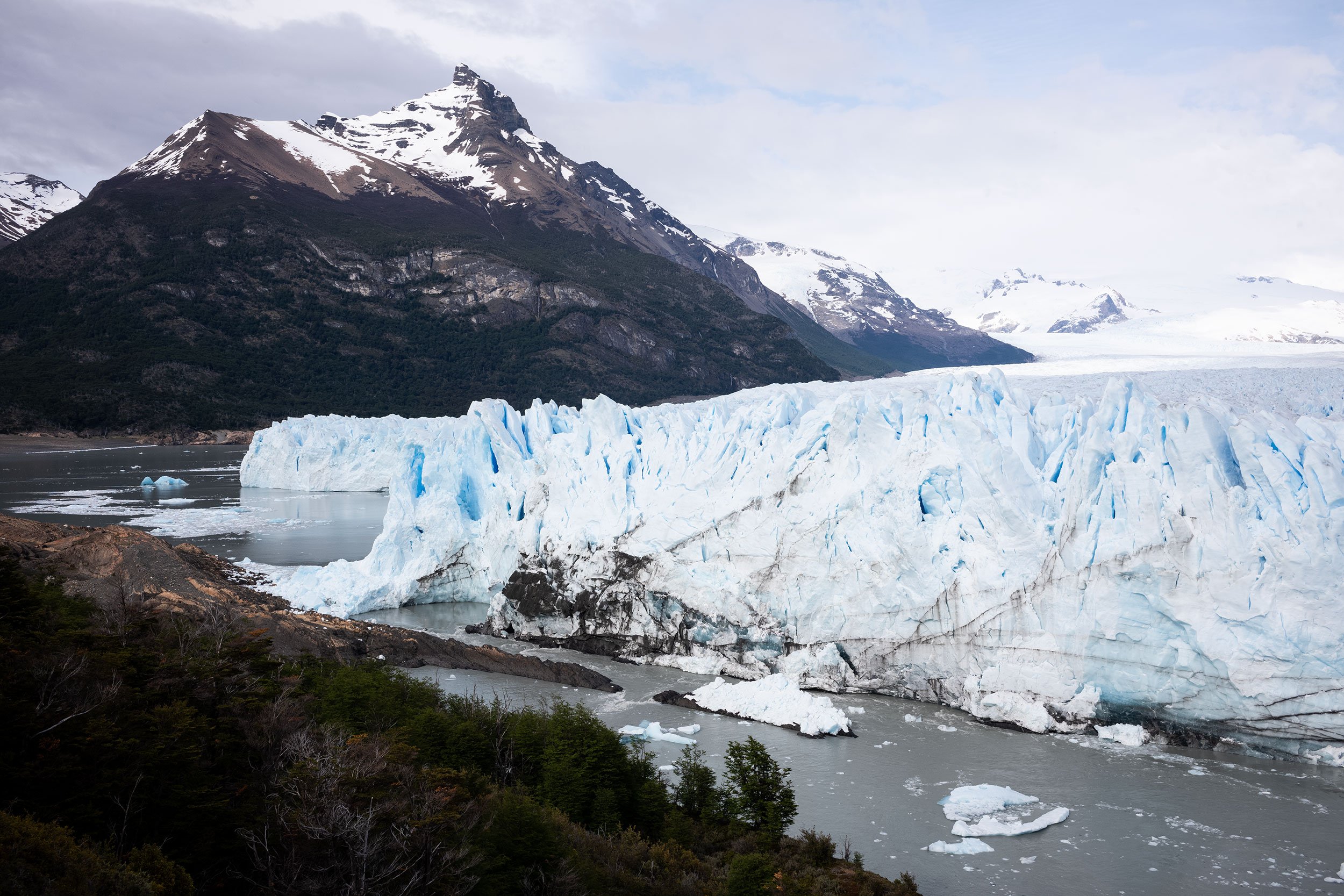







From the balconies, it was a short ride to the ferry. After finding out the name of our vessel, Lucila leaves us at the pier. Another guide will pick us up on the far shore; she’ll be waiting for us when we return. She waves as us as we walk towards the boat.
The boat sets off towards the glacier, offering us a view of the southern face. It slows as we approach so we can all take photos before speeding up and heading towards the opposite shore.



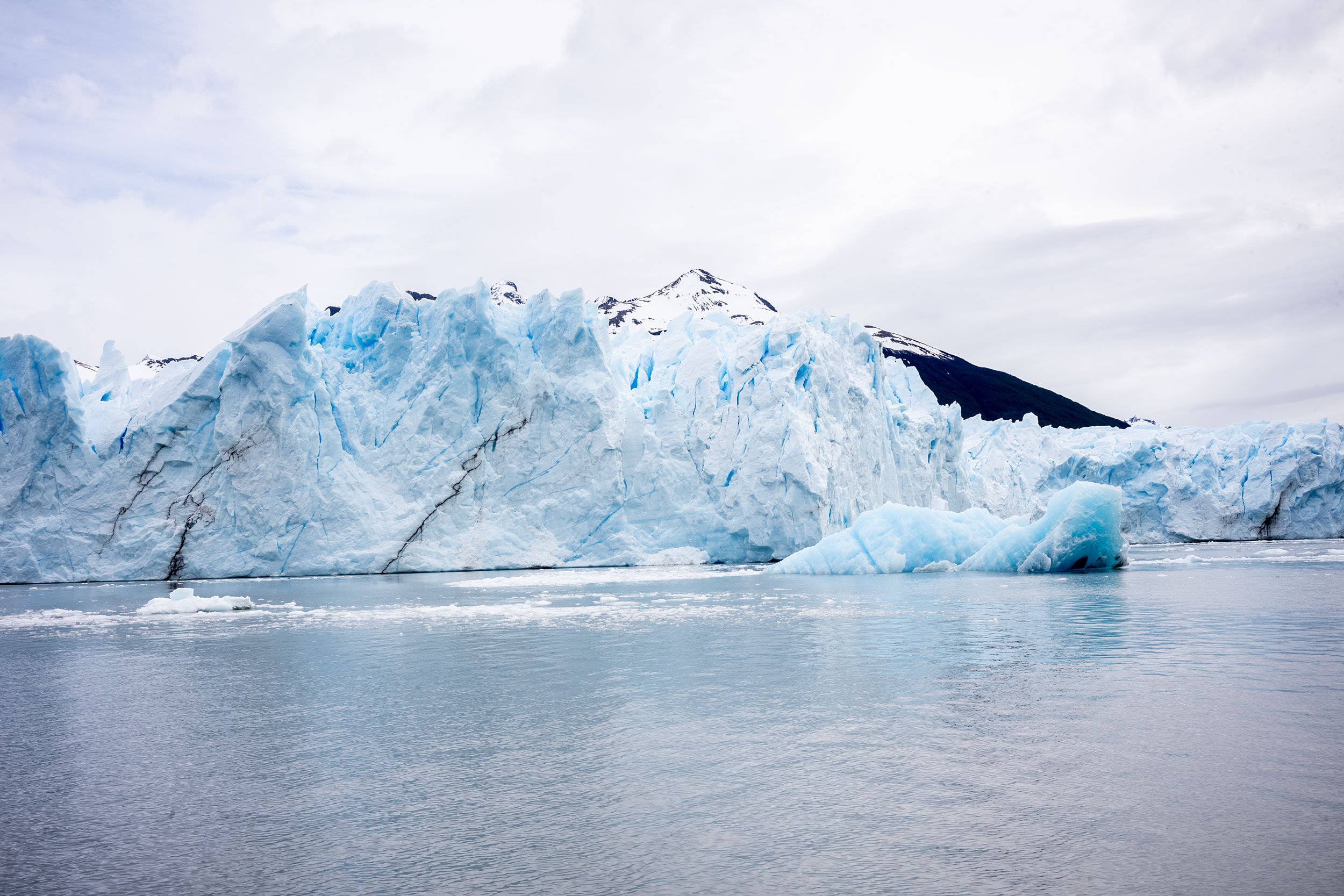
Tato meets us at the pier. He tell us that we’ll be eating lunch before we start, and points out the picnic tables and the small buildings in which we can eat. He tells us we can leave our things in the cubbys that run along the wall of the buildings. On the ice we want to have as few things as possible.
Thirty minutes later he briefs us on the excursion. We’ll be doing a short hike to the glacier, where we will pick up helmets and crampons. He asks if we have gloves as they are compulsory. If we fall, the ice will cut our hands.
Satisfied with our protection, we embark on our hike. Tato stops along the way to tell us about the glacier and answer our questions. I realize at one point that I didn’t actually know what defines a glacier. Technically? He asked. Yes. It’s any large mass of perennial ice that originates on land by the recrystallization of snow or other forms of solid precipitation and that shows evidence of past or present flow.
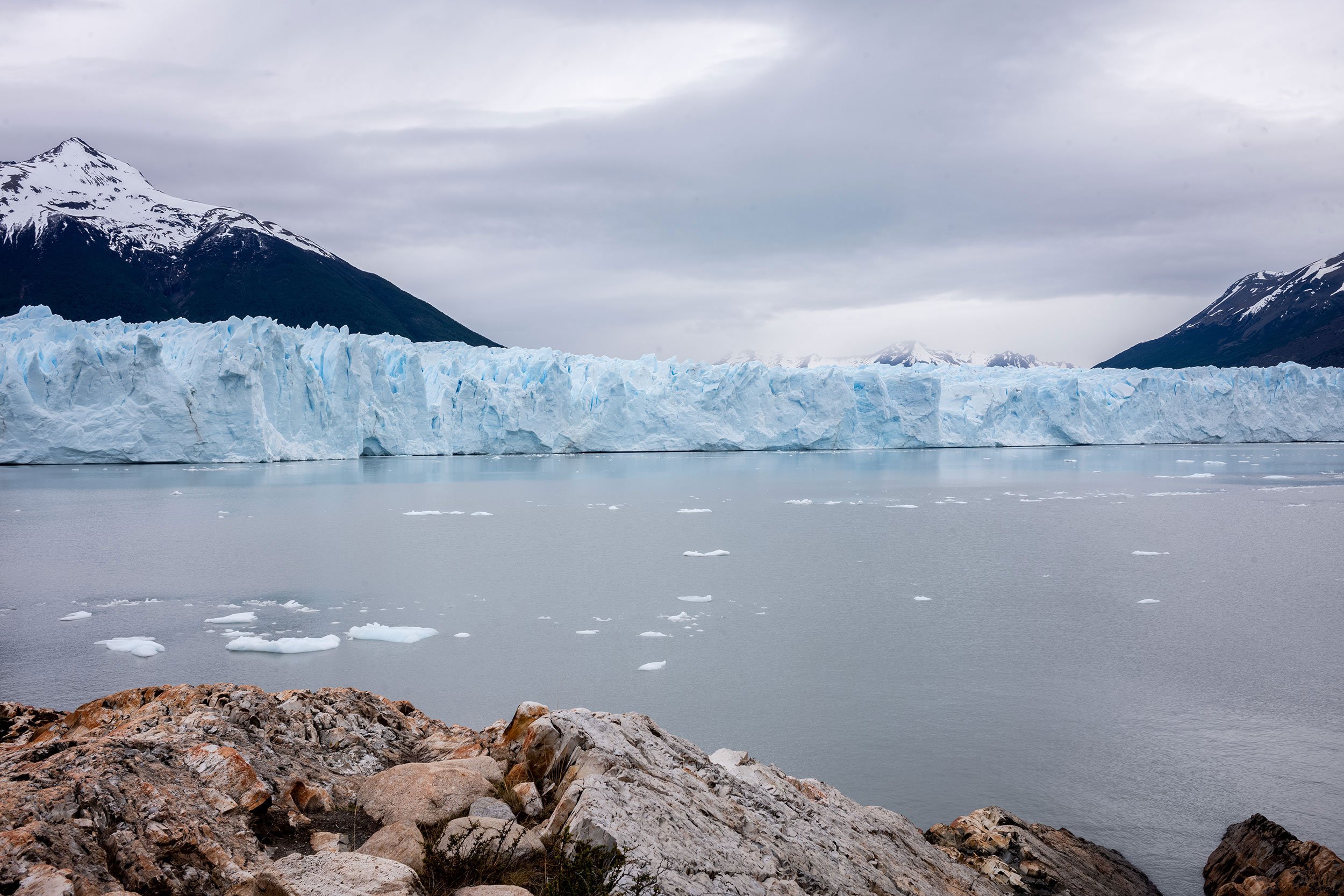


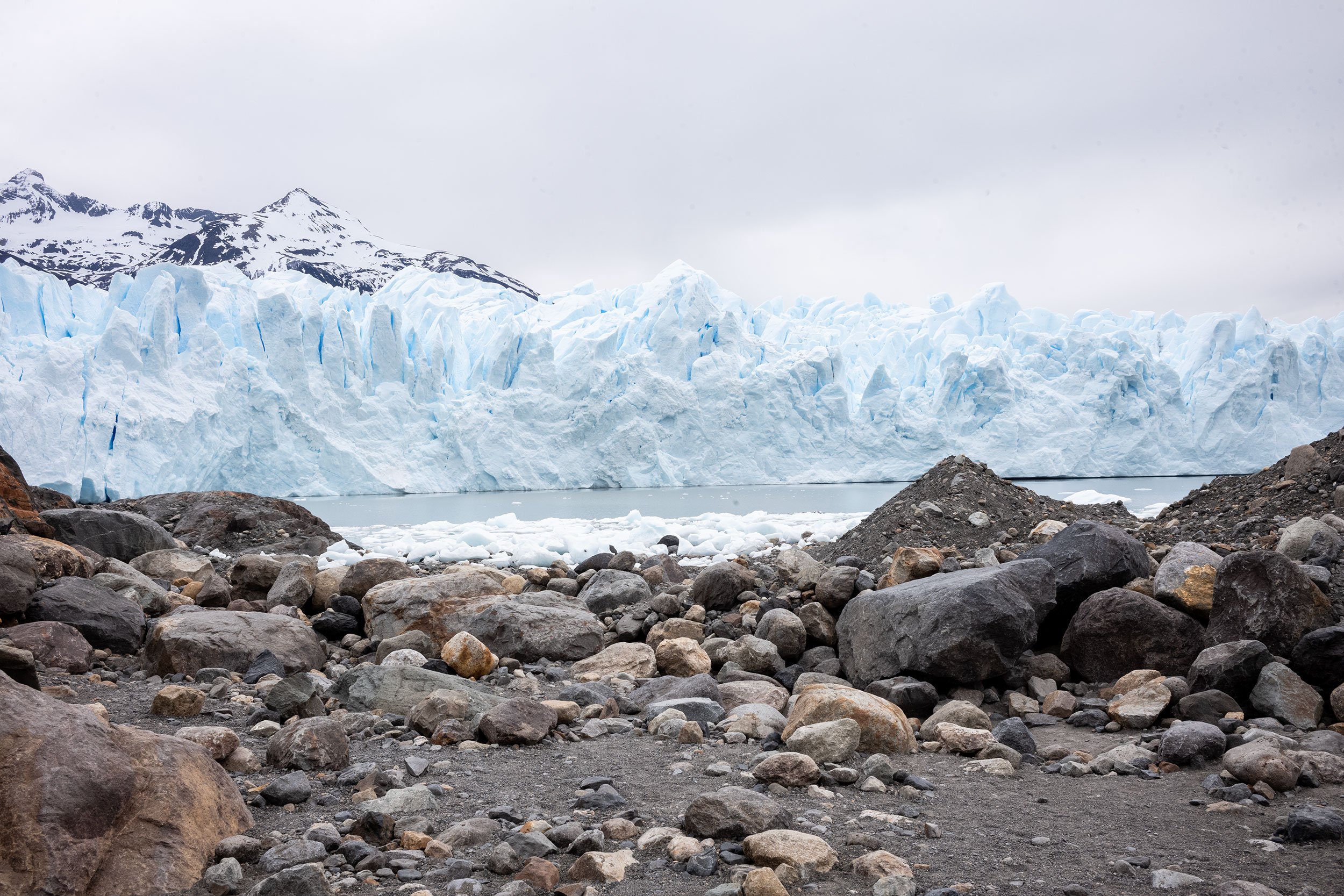
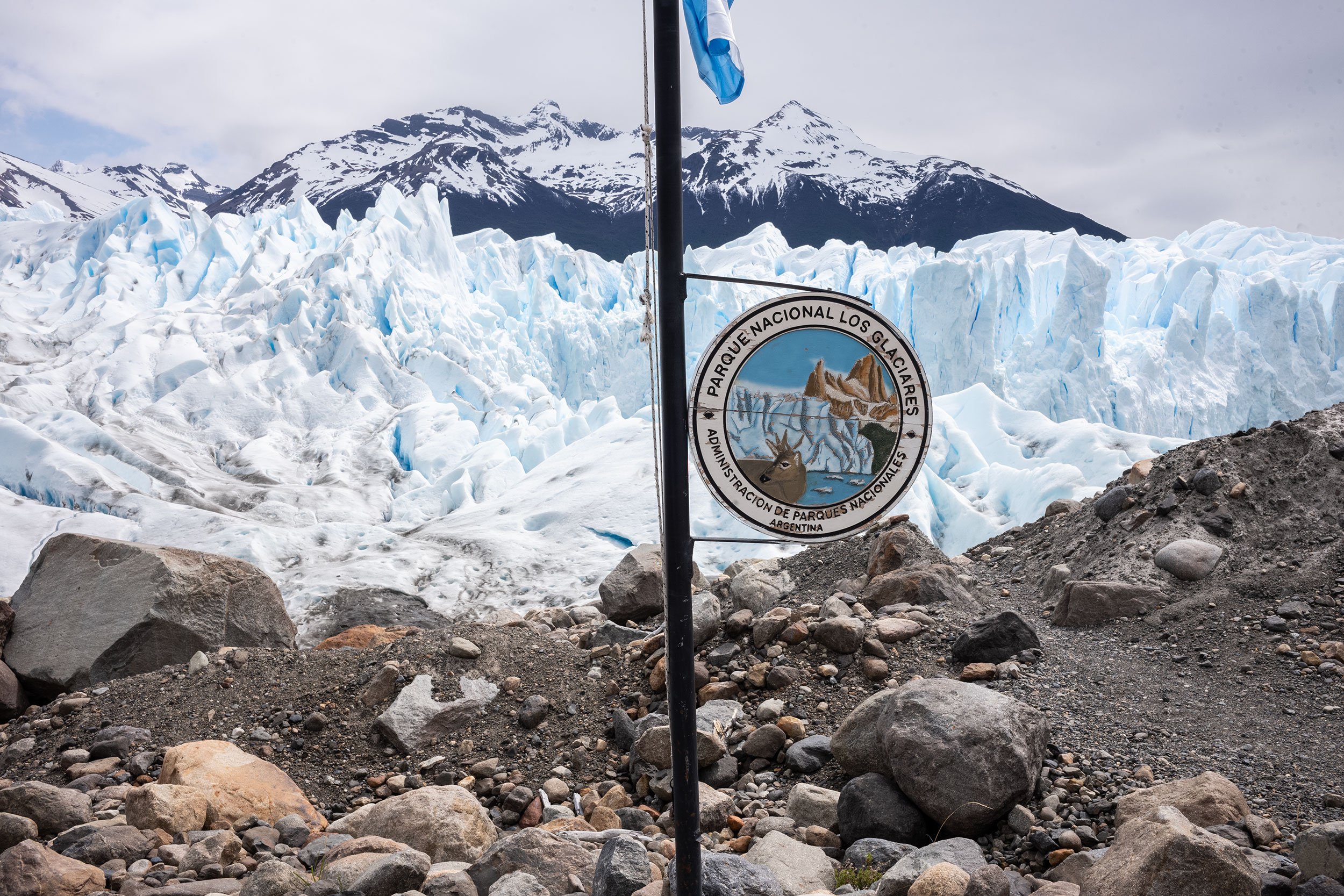
At the glacier we don our helmets. Other guides strap crampons onto our feet. It’s not that they don’t trust us to strap them on; they just don’t trust us to strap them on ourselves.
Once on the ice Tato gives us pointers on how to walk in them and introduces us to Luis who will be assisting. He tells us not to follow Luis as he’ll be free styling and watching after our group. He tells us to follow him in single file.
I ask if any tours include caves and he tells me that if they find them they doinclude them. But caves are unpredictable and not necessarily long in existence.



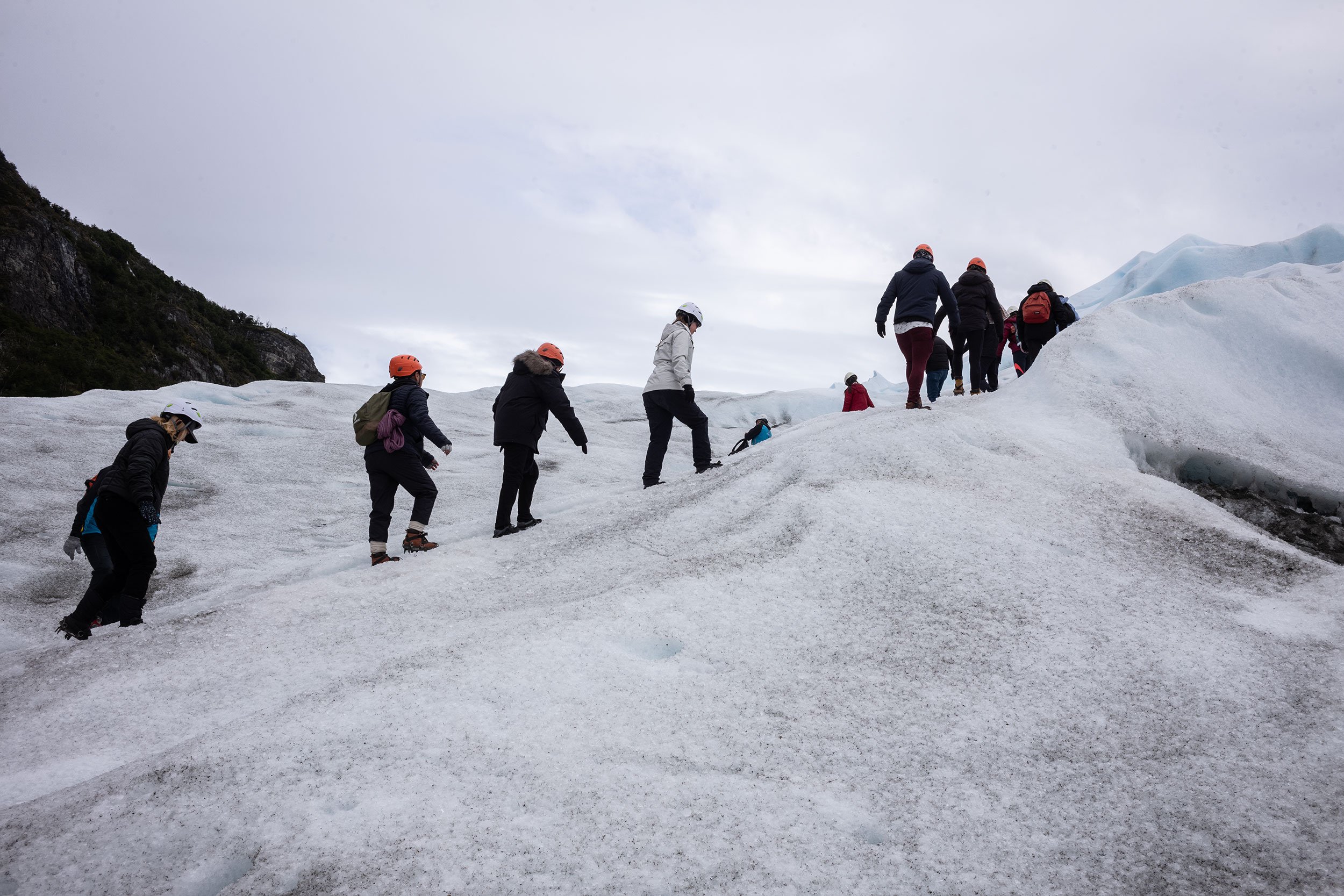

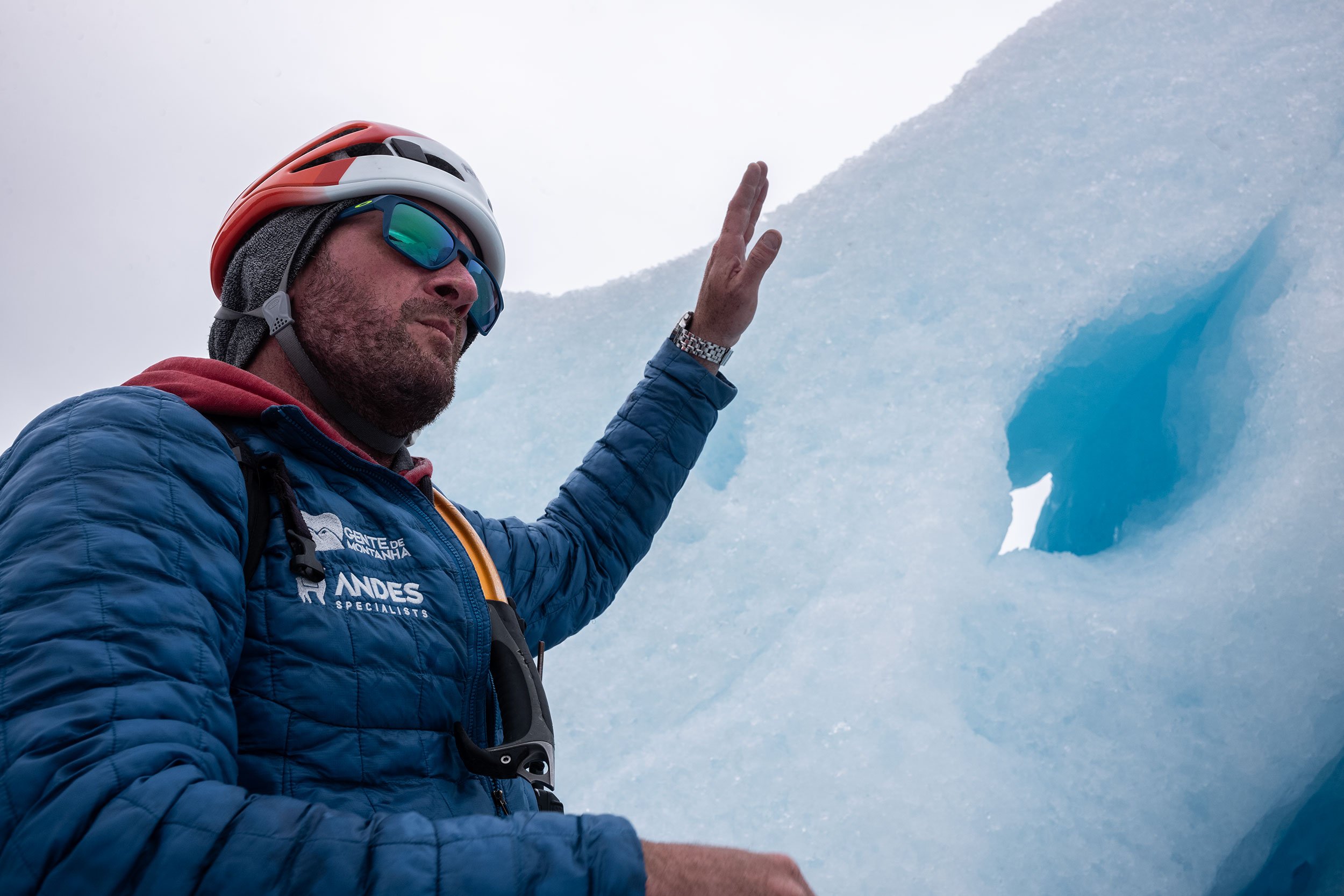
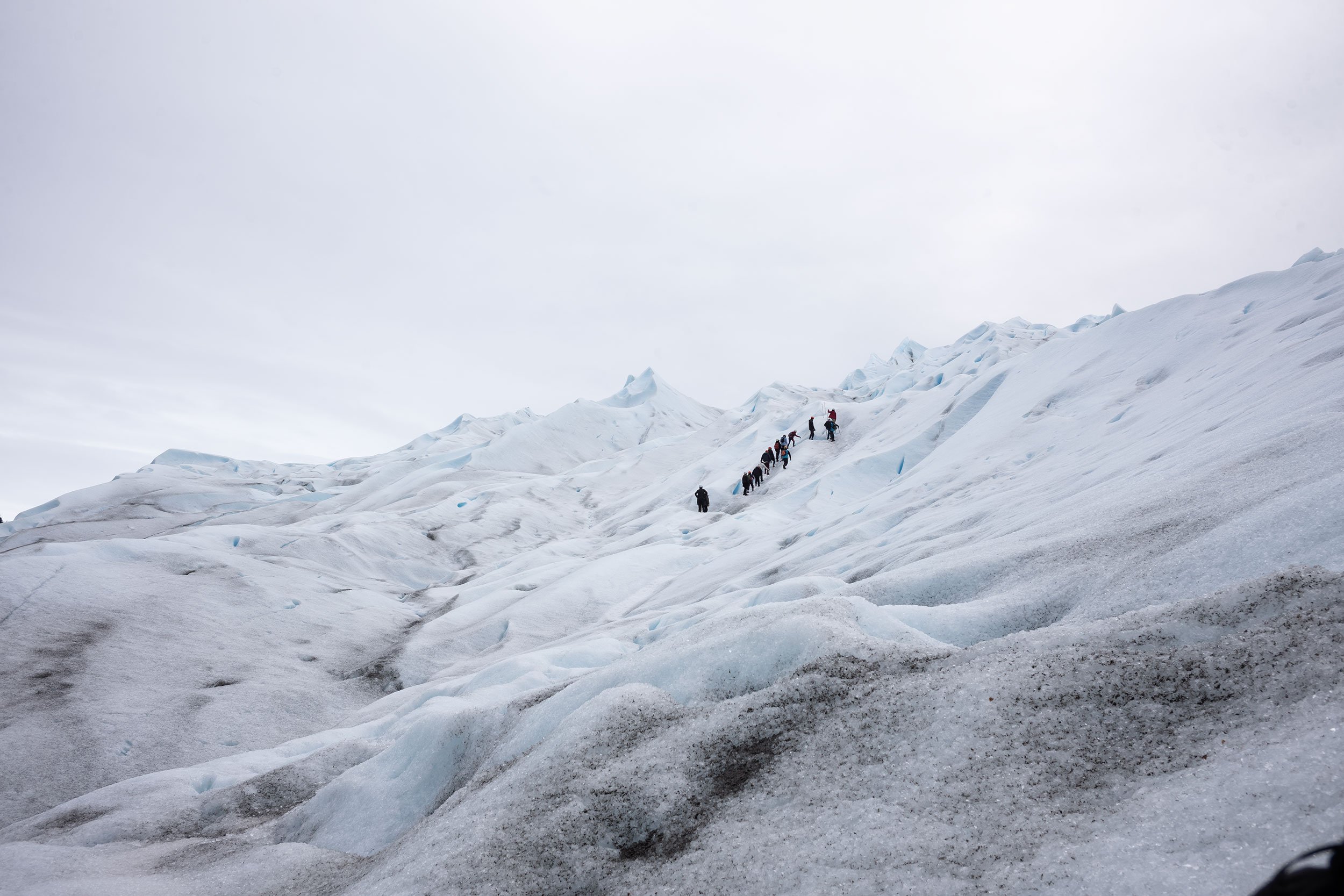
Further on he drapes his pickaxe on my shoulder and tells me to lead. Up a bit and then pause at the pool. He says he wants to make sure people made it up the slope ok.
After we are gathered by the pool he invites us to drink from the glacial water. I cup my hands, dip them into the cold water, and bring them to my lips. It’s cool and clear and refreshing.
As we walk on he finds a large hole leading down into the glacier. Tato has us come one by one before him to stand over the hole and look deep into the ice. He points out various features and offers the geology behind them. He tell us he loves rocks and could talk to us at length about them.
Noticing my camera he remakrs on it and I ask if he’s a photographer. He is. As is Luis. He shoots mostly landscape photography with a series of Nikon kits. He has all the glass now and is locked in though he says he’d love to change technologies. It’s just too expensive.





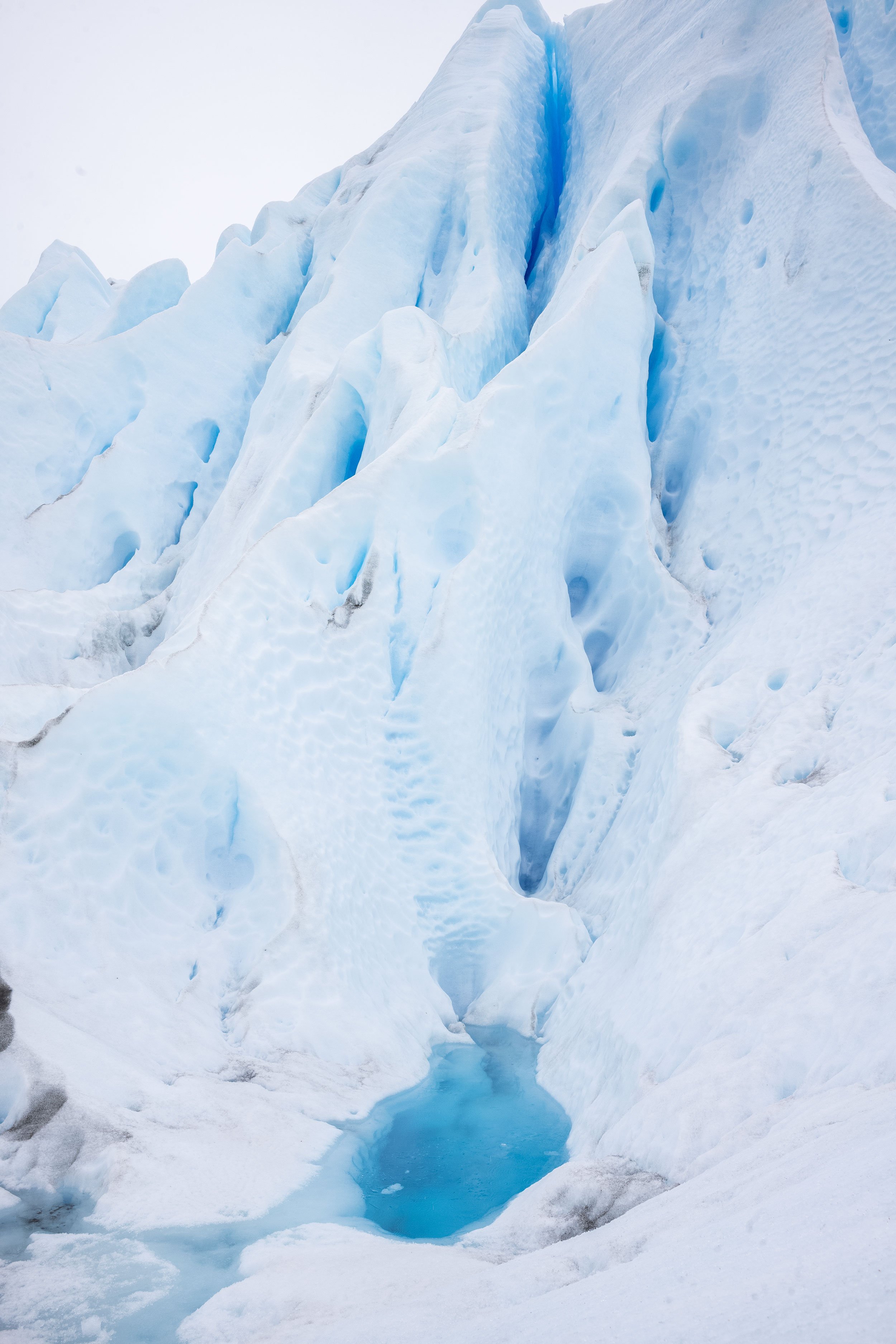
In the distance flocks of condor circle just past the camp. Tato says he had never seen so many. There must be over 30 in the skies. Rangers had been killing wild cows to help preserve new forests and the condors were feasting.
Luis has a more philosophical approach. He says we don’t really understand nature and now that we had introduced the cows who knows how the ecosystem may develop. Perhaps we want to control them but he also felt there must be a better way than killing them off.
At the highest point of our trek a table had been set up and Tato and Luis became our bartenders, serving us whiskey on the glacial rocks.
As we wound our way back to land, Tato had one last surprise in store for us: an ice cave. It was large enough for the entire group and inside he pointed out the boulder around which the cave had formed, former air pockets, and tension lines. He had warned us that inside it would be raining and ice melt felt from the roof at various spots. I opened my mouth and drank in the water droplets.
Walking back to the refugio Tato has us walk along a different path. A boardwalk boardwalk had been constrcuted in the forest, and from the path we can see the glacier peeking through the trees.
Back on the boat I climb to the upper deck for the views of the glacier as we pull away. In the late afternoon light, it glows blue and white, the colors of the Argentinian flag. 🇦🇷












